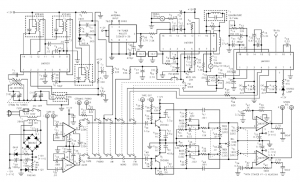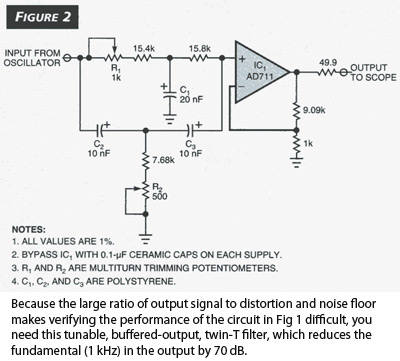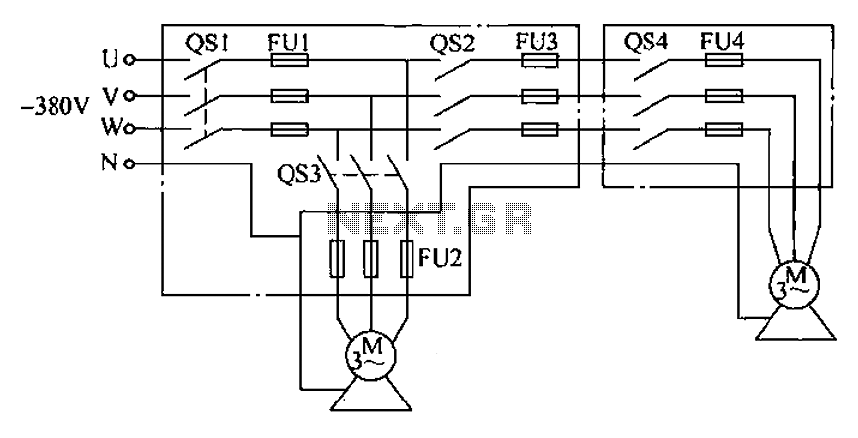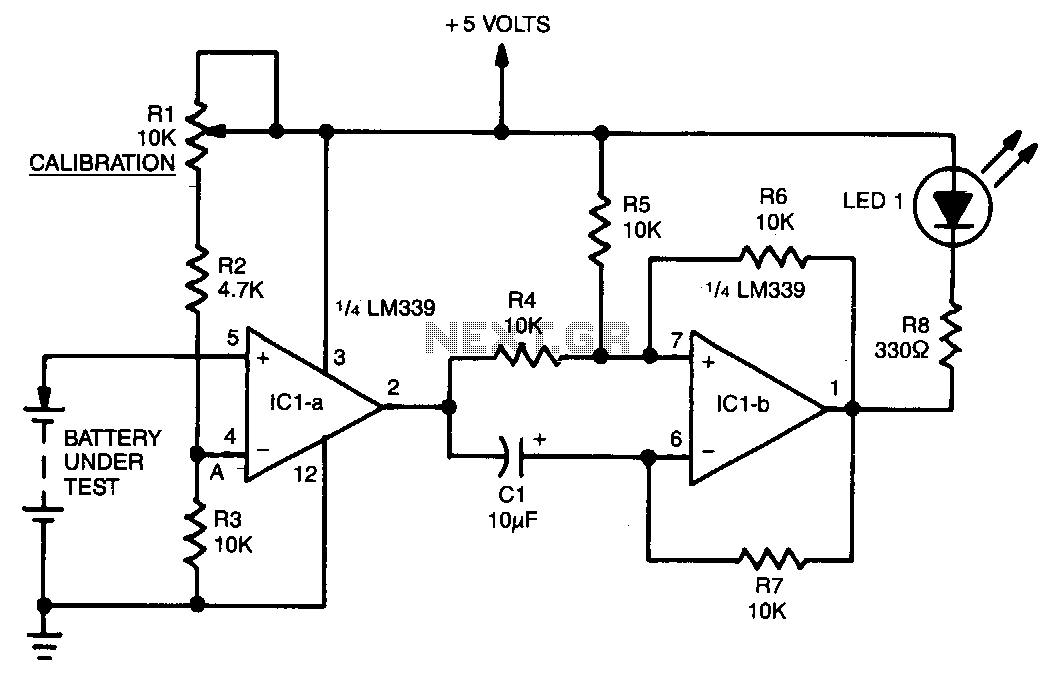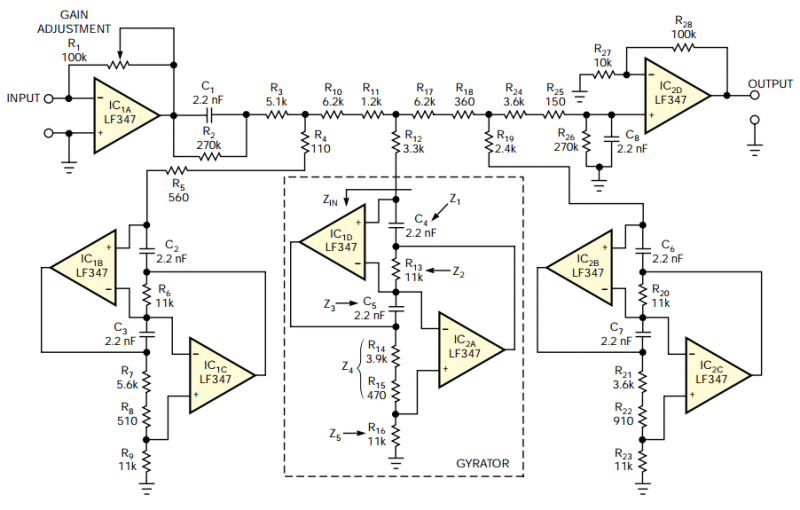
low cost intercom
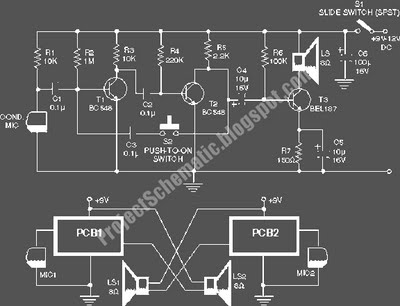
This design circuit is for an intercom system. The circuit consists of a 3-stage resistor-capacitor coupled amplifier. When the ring button S2 is pressed, the amplifier circuit, which is based around transistors T1 and T2, operates as an asymmetrical astable multivibrator that generates ringing signals. These ringing signals are amplified by transistor T3 to drive the speaker of the earpiece. This circuit design is cost-effective, with a current consumption of only 10 to 15 mA. Consequently, a 9-volt PP3 battery will have a long operational life when used with this circuit. To create a two-way intercom system, two identical units, as illustrated, are required. The output of one amplifier unit connects to the speaker of the other unit and vice versa. For single-battery operation, the corresponding supply and ground terminals of both units should be connected together. The complete circuit, including the microphone and earpiece, can be housed within the plastic body of a toy cellphone, which is readily available in the market.
The intercom circuit features a 3-stage amplifier design that utilizes resistor-capacitor (RC) coupling to enhance audio signal fidelity while minimizing noise. The initial stage involves transistors T1 and T2 configured to operate as an astable multivibrator. When the user presses the ring button S2, the circuit transitions into a state that generates a ringing signal, effectively alerting the recipient of an incoming call. The generated signals are subsequently amplified by transistor T3, which is responsible for driving the earpiece speaker, ensuring that the audio output is loud enough for clear communication.
The low current consumption of 10 to 15 mA allows for extended battery life, making the intercom system practical for everyday use. The choice of a 9-volt PP3 battery provides sufficient voltage to power the circuit while maintaining efficiency.
For two-way communication, two identical intercom units can be employed, with each unit's output directly feeding into the speaker of the opposite unit. This design facilitates bidirectional audio transmission, allowing both parties to communicate effectively. In a single-battery configuration, connecting the corresponding supply and ground terminals of both units is essential to ensure a stable power source for both amplifiers.
The compact nature of the circuit allows it to be housed within a plastic casing, such as that of a toy cellphone. This not only provides a protective enclosure for the electronic components but also enhances the aesthetic appeal of the intercom system, making it suitable for various applications. Overall, this intercom circuit design is an efficient, cost-effective solution for creating reliable two-way communication systems.This is a design circuit for intercom circuit. The circuit comprises a 3-stage resistor-capacitor coupled amplifier. When ring button S2 is pressed, the amplifier circuit formed around transistors T1 and T2 gets converted into an asymmetrical astable multivib-rator generating ring signals. These ring signals are amplified by transistor T3 to drive the speaker of earpiece. This design circuit is a low cost. This is the figure of the circuit. Current consumption of this intercom is 10 to 15 mA only. Thus a 9-volt PP3 battery would have a long life, when used in this circuit. For making a two-way intercom, two identical units, as shown in figure, are required to be used. Output of one amplifier unit goes to speaker of the other unit, and vice versa. For single-battery operation, join corresponding supply and ground terminals of both the units together. The complete circuit, along with microphone and earpiece etc, can be housed inside the plastic body of a cellphone toy, which is easily available in the market.
🔗 External reference
The intercom circuit features a 3-stage amplifier design that utilizes resistor-capacitor (RC) coupling to enhance audio signal fidelity while minimizing noise. The initial stage involves transistors T1 and T2 configured to operate as an astable multivibrator. When the user presses the ring button S2, the circuit transitions into a state that generates a ringing signal, effectively alerting the recipient of an incoming call. The generated signals are subsequently amplified by transistor T3, which is responsible for driving the earpiece speaker, ensuring that the audio output is loud enough for clear communication.
The low current consumption of 10 to 15 mA allows for extended battery life, making the intercom system practical for everyday use. The choice of a 9-volt PP3 battery provides sufficient voltage to power the circuit while maintaining efficiency.
For two-way communication, two identical intercom units can be employed, with each unit's output directly feeding into the speaker of the opposite unit. This design facilitates bidirectional audio transmission, allowing both parties to communicate effectively. In a single-battery configuration, connecting the corresponding supply and ground terminals of both units is essential to ensure a stable power source for both amplifiers.
The compact nature of the circuit allows it to be housed within a plastic casing, such as that of a toy cellphone. This not only provides a protective enclosure for the electronic components but also enhances the aesthetic appeal of the intercom system, making it suitable for various applications. Overall, this intercom circuit design is an efficient, cost-effective solution for creating reliable two-way communication systems.This is a design circuit for intercom circuit. The circuit comprises a 3-stage resistor-capacitor coupled amplifier. When ring button S2 is pressed, the amplifier circuit formed around transistors T1 and T2 gets converted into an asymmetrical astable multivib-rator generating ring signals. These ring signals are amplified by transistor T3 to drive the speaker of earpiece. This design circuit is a low cost. This is the figure of the circuit. Current consumption of this intercom is 10 to 15 mA only. Thus a 9-volt PP3 battery would have a long life, when used in this circuit. For making a two-way intercom, two identical units, as shown in figure, are required to be used. Output of one amplifier unit goes to speaker of the other unit, and vice versa. For single-battery operation, join corresponding supply and ground terminals of both the units together. The complete circuit, along with microphone and earpiece etc, can be housed inside the plastic body of a cellphone toy, which is easily available in the market.
🔗 External reference
